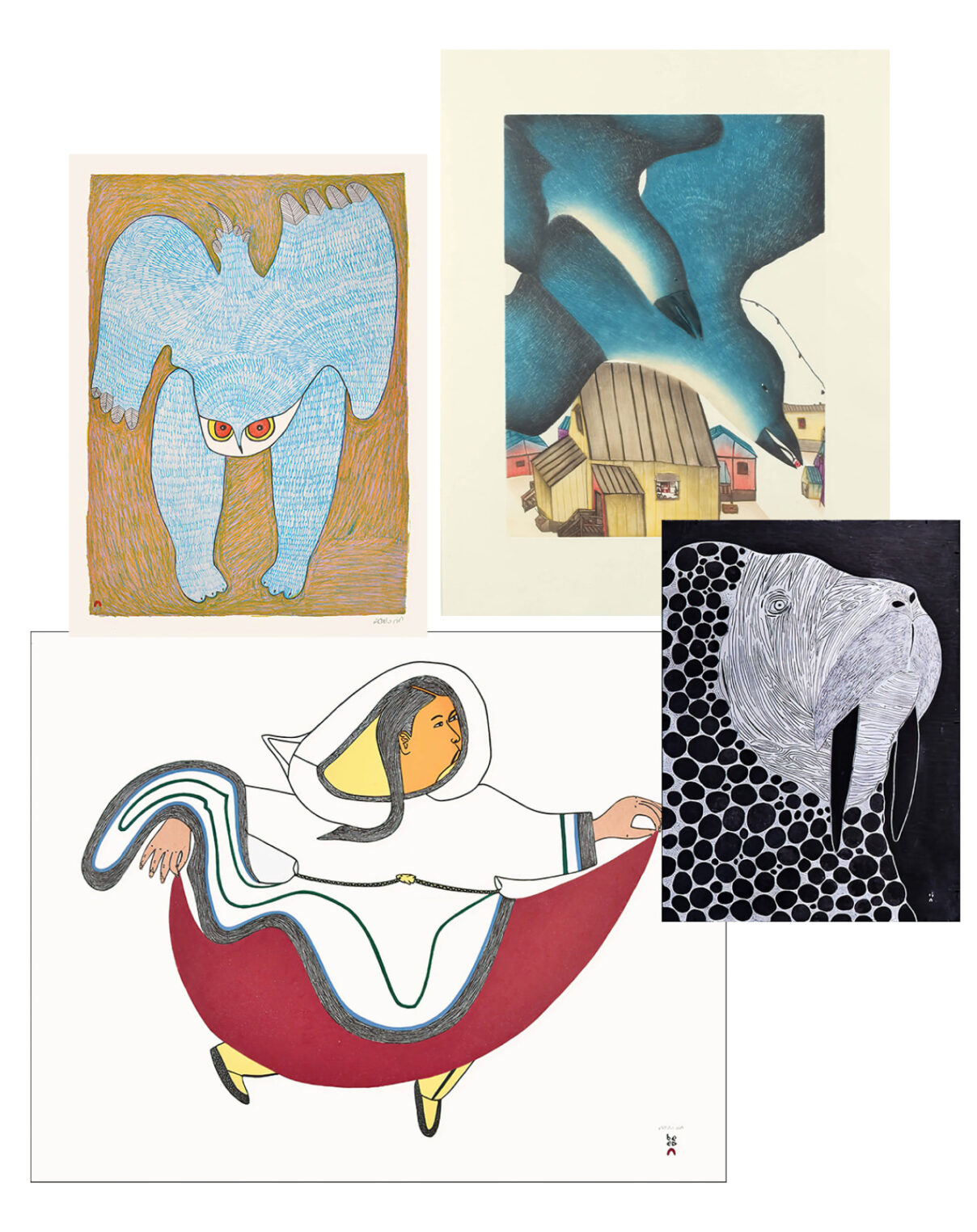
Pieces by Ningiukulu Teevee; Canada Goose has purchased more than forty of Teevee’s illustrations.
Image courtesy of: Canada Goose
Most of us are familiar with the luxury parka brand, Canada Goose. Founded in 1957, the brand (courtesy of the company’s website), “is designed with purpose and informed by the rugged demands of the Arctic. Made in Canada since 1957, the precision of every cut, fold and stitch is one that’s guided by decades of experience.”
In an effort to stay true to their unique approach to retail, the brand presents immersive, experimental spaces at their fifty brick-and-mortar boutiques. In addition to “cold rooms” used to test parkas… where temperatures are set to minus 13 degrees Fahrenheit and real snow falls, the company has also created gallery-like environments within their stores.
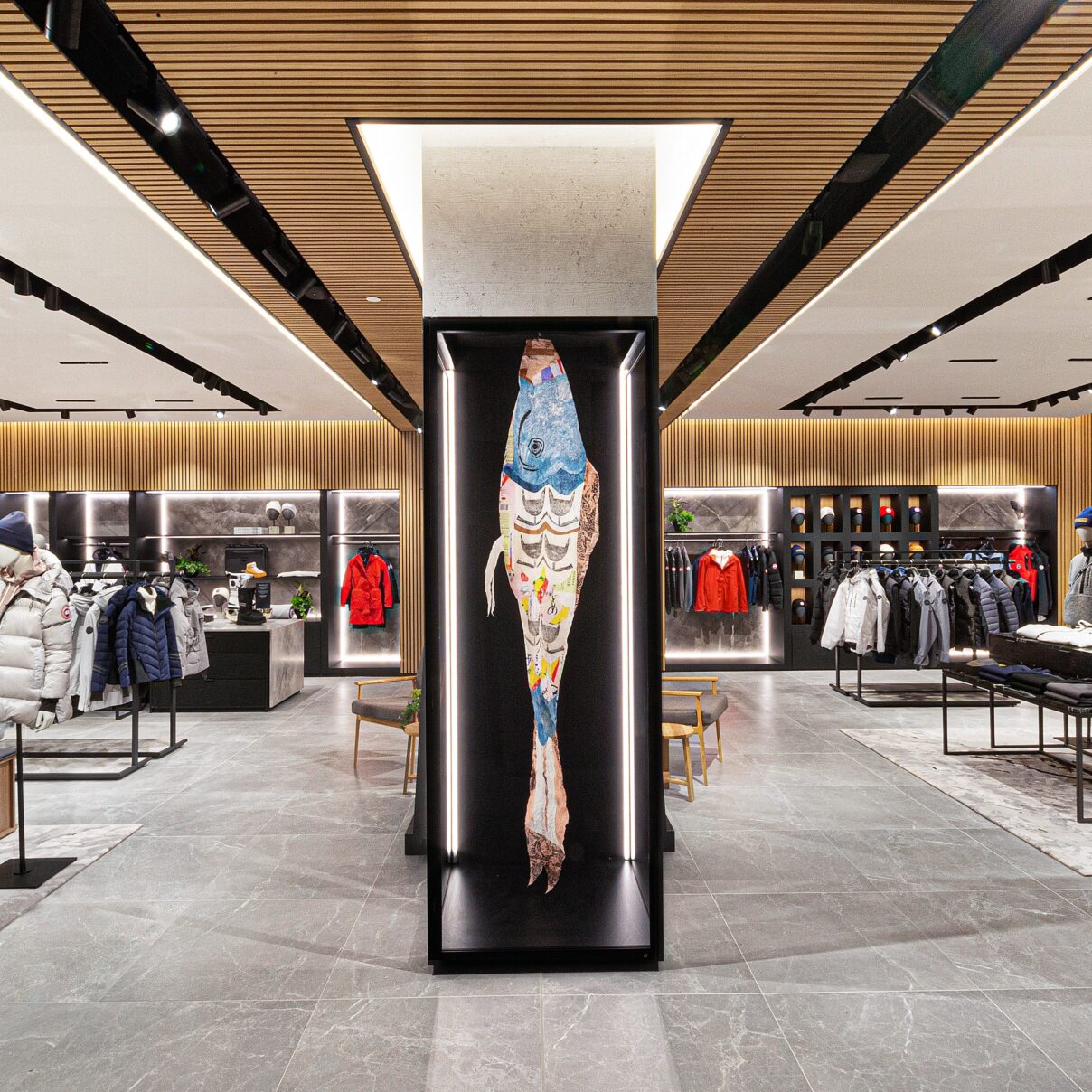
Alexa Hatanaka’s “Koinobori,” 2021. A sewn paper linocut displayed at the Edinburg Canada Goose boutique
Image courtesy: Namara
Embracing Inuit Art has been a company goal since Canada Goose started investing in the art in 2016. Over the past seven years, the company has grown their collection to more than 500 pieces. This is a bigger than just buying to accessorize, this is the brand’s effort to “highlight the work of Canadian artists while helping consumers understand the brand’s deep roots in Northern Canada.”
However, easier said than done! The firm knew this endeavor had to be done in a delicate manner and that the assemblage contain of a wide range of work from sculptures to large canvases. This was necessary in order to ensure that the displays had the proper effect on those visiting the boutiques. As such, Canada Goose partnered with an art curation firm known for helping international luxury brands (courtesy of Namara’s website) “embrace the narrative power of art.”
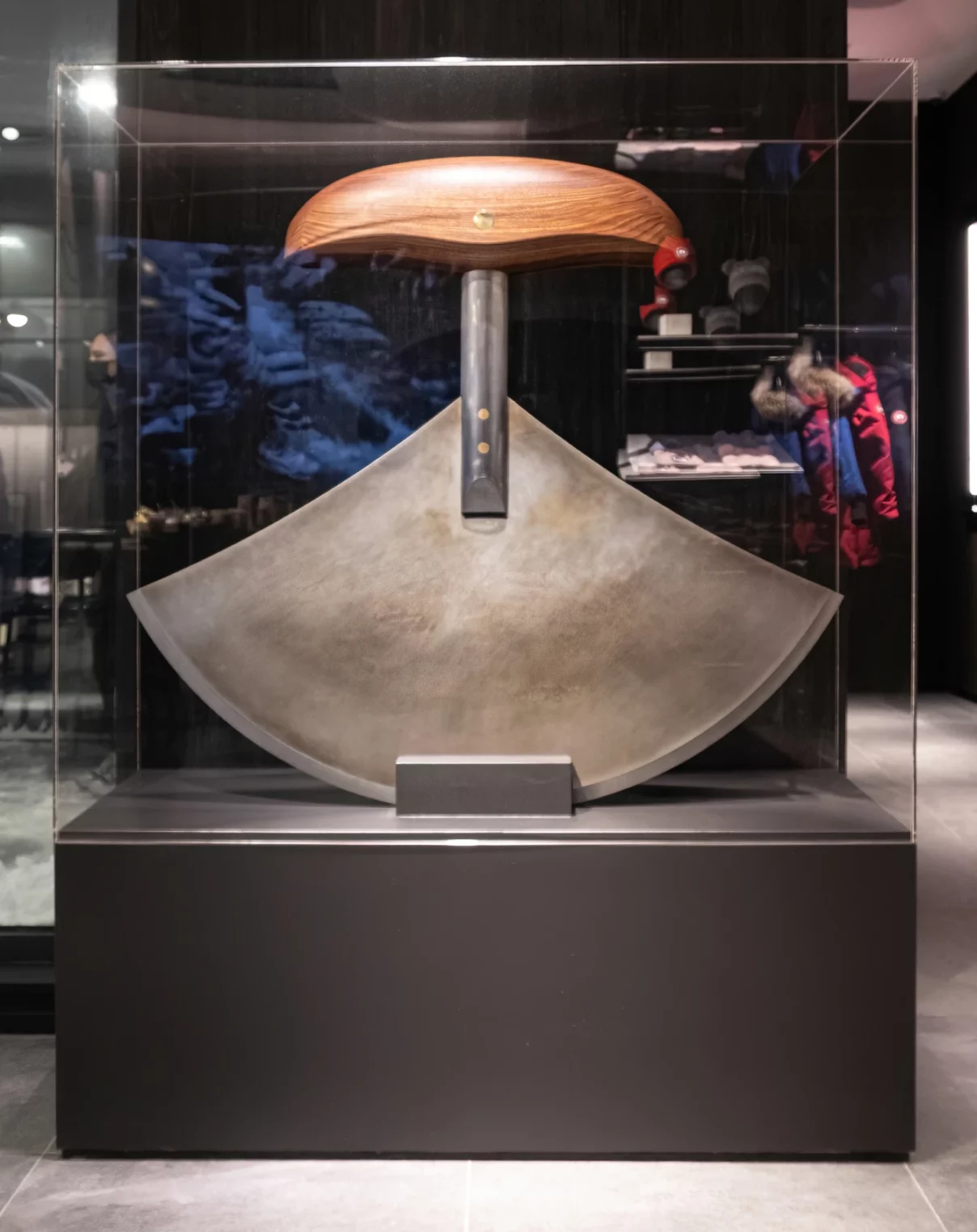
A sculpture by Couzyn van Heuvelen. The Canadian Inuk sculptor typically uses materials not normally associated with Inuit art.
Image courtesy of: Canada Goose
Canada Goose typically invests in pieces by lesser-recognized artists; they believe that those artists can benefit the most from exposure on a global scale. Thus, their boutiques have become pseudo museums. For each piece, there is a small “museum-like” description of the work and the artist; in addition, there is a QR code that viewers can scan in order to learn more about the artist.
Furthermore, the company makes sure their in-store ambassadors understand the art so that they can explain and discuss the pieces with interested customers. All of this is part of Canada Goose’s efforts to highlight Inuit artists in conjunction to appropriating the brand’s deep Northern Canada roots.
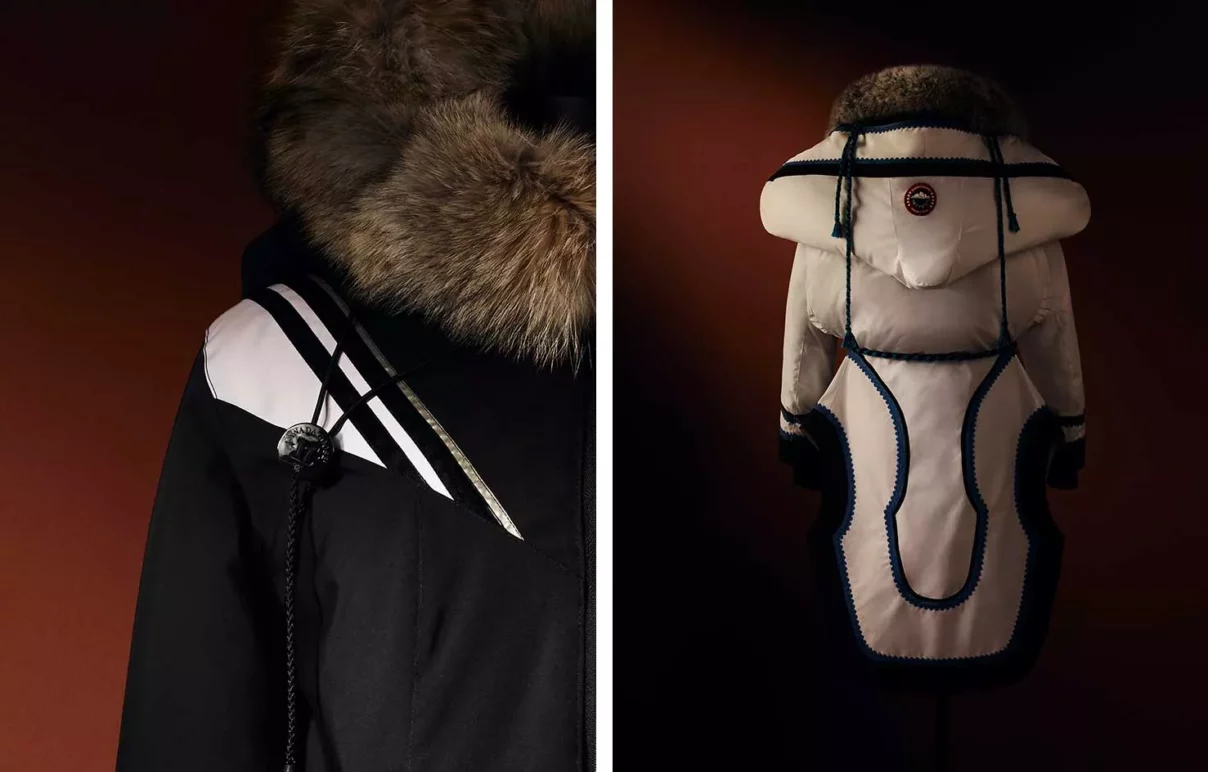
Celebrating Inuit seamstresses: Atigi Parka by Kristy King (left) and Atigi Parka by Meeka Atagootak
Image courtesy of: Wallpaper
Last year, the company went one step further by launching Project Atigi. Staying true to their Canadian heritage and identity, Canada Goose’s newest initiative was a 14-piece capsule collection of one-of-a-kind parkas. Each atigi (parka in Inuit) was individually made by an Inuit seamstress from Northern Canada.
The result was two-fold; it allowed entrepreneurial opportunities for the women and it was the perfect way to showcase the high-level of craftsmanship in traditional Inuit designs. All of this was done in an ingenious way that cast the Inuit community in a more contemporary regard.
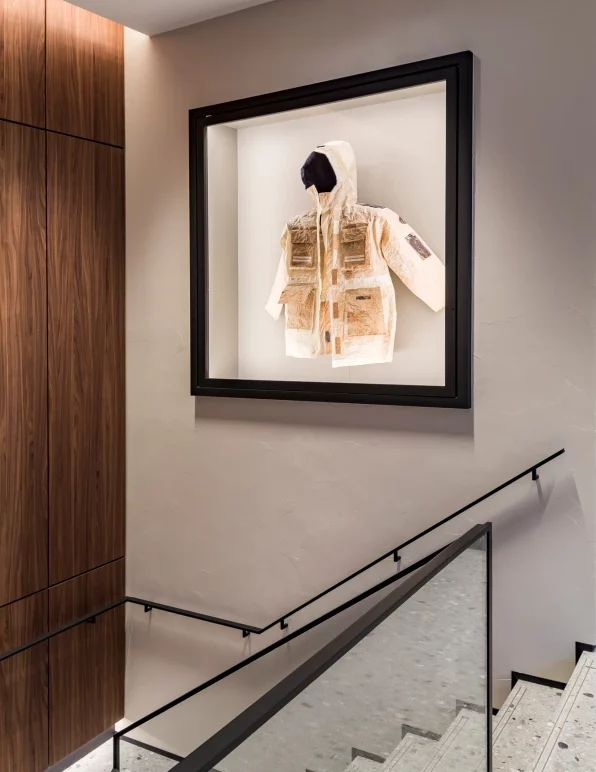
“Paper Snow Mantra” by Alexa Hatanaka, at the Canada Goose in Frankfort.
Image courtesy of: Fast Company
Since 2009, Canada Goose has been donating materials such as zippers, fabric, and trimmings to Northern Canada’s indigenous people through the Resource Center Program. The program was founded after two Inuit seamstresses were asked to partner with the brand for its 50th anniversary. During the project, the sisters, Meeka and Rebecca Atagookak, requested to repurpose discarded materials to make jackets for their families and friends.
Dani Reiss, Canada Goose’s CEO said, “As a Canadian brand, the North is a huge part of Canada and a huge part of our heritage. Our brand was born in the North, and so for us to give these 14 women, whose role is to make parkas for their community, the chance to create entrepreneurial opportunities, this is the ultimate in social entrepreneurship. To me, it’s what businesses should be doing and it’s a really authentic way for us to pursue that. We started the Canada Goose Resource Centers [because] we realised that they didn’t always have access to the best materials and we had those. This is really the next iteration of that, creating opportunities for people in Northern Canada to take their skills and sell them to a global marketplace.”
We can honestly say that we had no idea of the good Canada Goose has done, and of the commitment they made to the indigenous communities of Northern Canada. It is certainly a brand that we can get behind… for their fashion, for their generosity and desire to “do good,” and for the art the showcase.